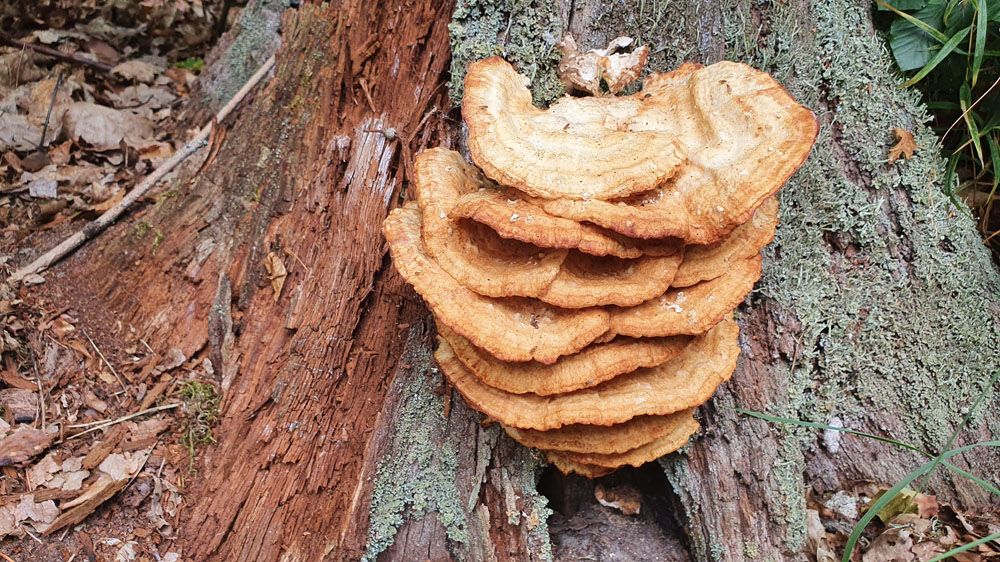
Mushroom or Conks
Causes and control of Conks and Mushrooms
A conk or mushroom grows around the tree’s base. It is usually a firm, solid growth that is white, grey, brown, or yellowish in appearance. The mushrooms are the reproductive structures of fungus that grow on rotting wood. Some conk species can degrade the wood of a healthy tree, although they are more commonly seen on dead or decaying wood. When a conk appears on the trunk of a tree, it is a sure sign that the tree is suffering from the deadwood. It is critical to check the tree to verify that it is structurally sound and does not pose a hazard. If the tree or large branches have deteriorated to the point that they pose a physical threat, they should be removed immediately.
What are Mushroom Conks?
Conks are fungal fruiting structures that produce spores. They have been discovered on tree trunks and branches, stumps, fallen logs, and even structural timber. The fungus’s primary body is called mycelium, and it consists of long, thin filaments that enter and occupy a tree. They recycle nutrients, construct soil, and produce ideal homes for birds, arboreal animals, and insects as they decompose woody debris. The majority of conks are inedible because they are rough, corky, or woody. However, some are gathered for medical purposes or to make smoking mixes whereas if you notice mushroom conks sprouting out of your tree trunk, this indicates that the fungi at work have already pierced the tree’s defenses and are degrading the heartwood. For these mushroom conks to form, rotting wood within the tree must feed the fungus. When mushrooms sprout from the root flare or in large numbers on surface roots, the plant’s root system has been damaged and requires urgent treatment
Damages of conks and mushrooms:
When mushrooms or conks appear on tree bark, it typically indicates that the tree has been infected with a disease that causes rot. While not all mushrooms are hazardous to trees, a large number of them are. They induce heart decay, which causes healthy trees to rot at the trunk’s heart. These fungi infiltrate the tree through wounds produced by incorrect pruning, lightning strikes, windstorms, fire, building, or other forms of tree damage.
Treatment of fungal conks:
Fungi that generate conks typically penetrate trees through mechanical wounds, damaged roots, broken or rubbing branches, frost fractures, sunburned bark, and incorrect pruning. Because fungal spores spread in the wind, rain, and on birds and insects, the best protection is to maintain your tree’s protective outer coat intact. This means that you should:
- When pruning, be sure to leave clean cuts.
- Trees should be pruned and trained to provide for good air movement and structural strength.
- Pruning sealants should not be used (which seal in moisture and pathogens).
- Avoid excavating or rototilling near trees to ensure adequate drainage.
- Trees should be protected from weed whackers, lawnmowers, and automobile doors.
- Whitewash any exposed branches and trunks.
- When tree supports are no longer required, they must are removed.
- Make certain that the sprinkler spray does not touch the tree trunks.
